
Bale Grist Mill
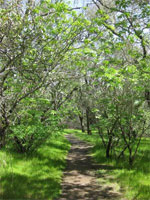 |
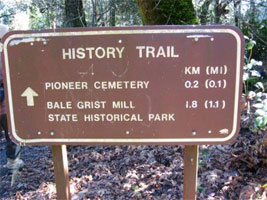 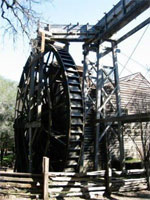 |
- The park is located 5 miles north of St. Helena and 4 miles south of Calistoga on Highway 29/128.
- Milling demonstrations and historic tours are offered on weekends.
- School tours are available by reservations on Tuesday only.
- Reservations can be made by calling Bothe-Napa Valley State Park at (707) 942-4575.
- The park is closed Thanksgiving, Christmas and New Year's Day. Please call the park prior to visiting.
The park is the site of a water-powered grist mill that was built in 1846. It was once the center of social activity as Napa Valley settlers gathered to have their corn and wheat ground into meal or flour. The owner of the mill was Dr. Edward Turner Bale. He received the property in a land grant from the Mexican government and lived near the site until his death in 1849. The mill remained in use until the early 1900s.
The mill and its 36-foot water wheel are protected as a state historic landmark and have been partially restored. A trail connects the historic park to Bothe-Napa Valley State Park. Additionally, the park includes the site of the first church in the Napa Valley as well as the Pioneer Cemetery.
Visitors can hike from the mill on the historic trail to Bothe-Napa Valley State Park, which features extensive picnic facilities and a number of trails. The round trip hike from Bale Grist Mill State Historic Park to Bothe-Napa Valley State Park is approximately two miles.
More about the Park
The gristmill and granary were built with local materials, Douglas firs and coast redwoods. Some timbers were cut to length with the bark left on, while others were roughed out with hand tools. The timbers were notched and held in place with wooden pegs as well as nails and screws.
The foundation of the structure is native stone. The mill was powered by a waterwheel, with water diverted from Mill Creek nearby. A ditch carried the water from a millpond to a wooden flume, which brought the water to the top of the waterwheel.
The first wheel did not provide enough power during dry summers and was replaced by a larger one, similar to the one at the mill today.
Farmers brought grain to the mill where it was placed into the boot of an elevator to be mechanically transported upstairs where it was cleaned by various types of equipment. The slow turning of the old grind stones and the dampness of the mill's site gave the meal a special quality for making cornbread, yellowbread, shortening bread and spoon bread.
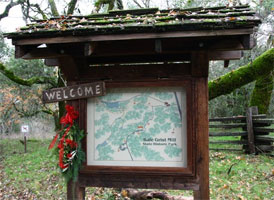 |
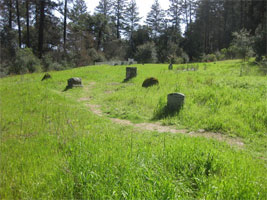 |
| |
|
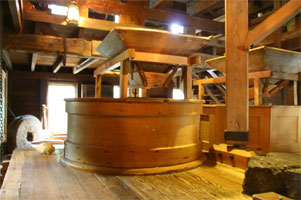 |
 |

Custom Search